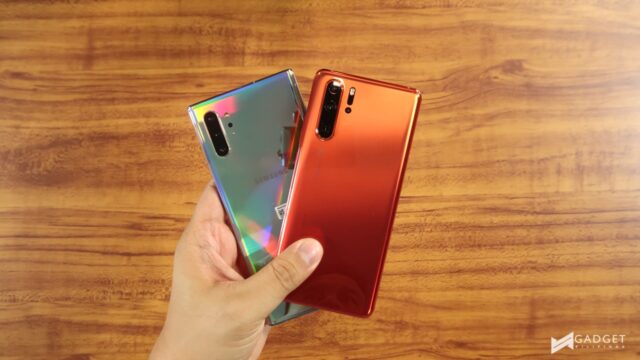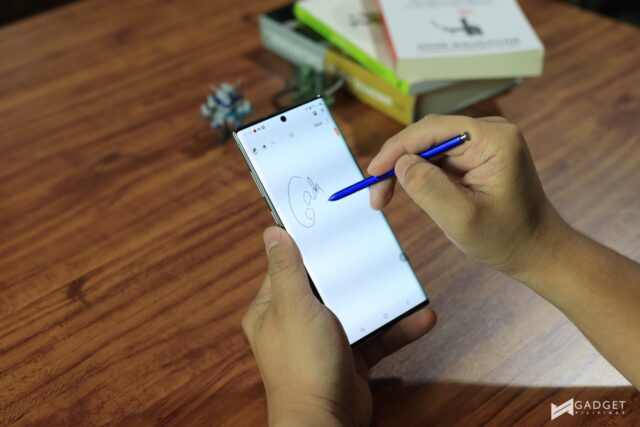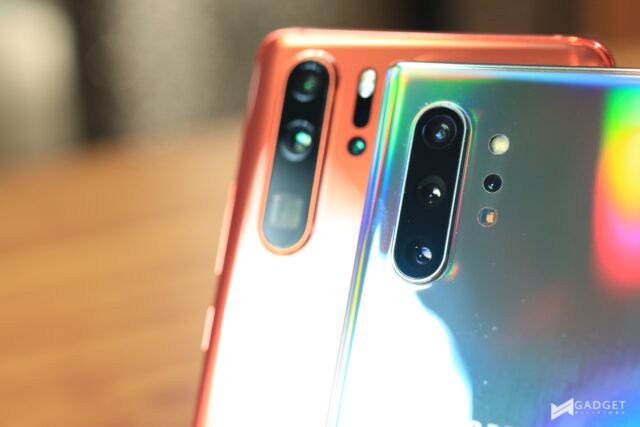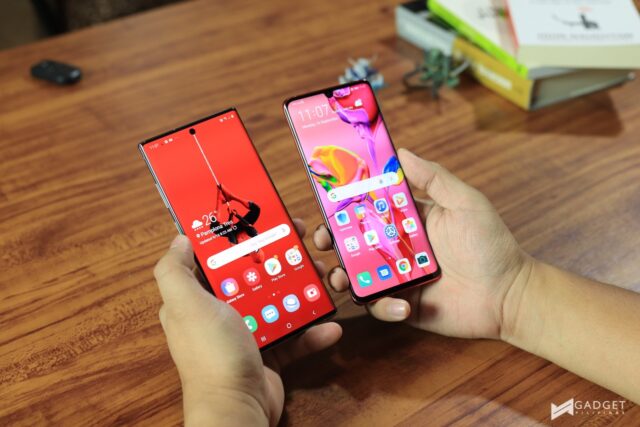Two of the the most sought-after smartphones this year are Huawei P30 Pro and Samsung Galaxy Note 10+. I easily managed to ditch our Apple iPhone XS Max because the two phones offer better features that suit my needs as a businessman and blogger.

In one of my speaking engagements, I classified smartphones as INPUT – objects that allow me to be productive in either my business or hobbies. As CEO of Blip Media, I use the smartphone during meetings, presentations, reading and responding to emails. A smartphone is a feature-packed accessory; an essential part of my everyday carry as a businessman. Without it, I wouldn’t be able to perform my duties as someone who has a vital role in our corporation.
 As a blogger and content creator, smartphones allow me to cover events and document my travels. You’ve probably seen some of my short travel videos, which I took using Huawei P30 Pro and Samsung Galaxy Note 10+.
As a blogger and content creator, smartphones allow me to cover events and document my travels. You’ve probably seen some of my short travel videos, which I took using Huawei P30 Pro and Samsung Galaxy Note 10+.
In this comparison, we’re zero onto 4 key features of the smartphones: Design, Camera, Hardware Performance and Price
Elegance is key
One of the reasons why I picked these two smartphones is because of they way they are designed. The phones are not crammed with so much design quirks, but they maintained to look really good in all angles.
You have plenty of colorway options if you get the Huawei P30 Pro. The latest Amber Sunrise version is a head turner while the Breathing Crystal version gives off a calm yet fashionable vibe. Huawei offers more color choices, thus giving consumers more options.
- Huawei P30 Pro v Samsung Galaxy Note 10 4
- Huawei P30 Pro v Samsung Galaxy Note 10 4
- Huawei P30 Pro v Samsung Galaxy Note 10 3
- Huawei P30 Pro v Samsung Galaxy Note 10 3
Samsung Galaxy Note 10+ Aura Glow looks unique in many ways, and it’s a must-have if you’re the type of person who can’t easily pick the colorway you want.
It isn’t just about the colors though. Display plays a vital role in the design element of smartphones. Each device has its own merit, but I find Samsung Galaxy Note 10 Plus’ Dynamic Super AMOLED Display better in terms of visual quality and screen-to-body ratio.
- Huawei P30 Pro v Samsung Galaxy Note 10 2
- Huawei P30 Pro v Samsung Galaxy Note 10 2
- Huawei P30 Pro v Samsung Galaxy Note 10 1
- Huawei P30 Pro v Samsung Galaxy Note 10 1
One thing is certain on both phones – they look elegant, and it is that quality that trumps over other design features of other smartphones. Huawei P30 Pro has more choices in terms of color, while Samsung Galaxy Note 10+ has better display quality.
Business-driven features
Whether you choose Huawei P30 Pro or Samsung Galaxy Note 10+, both smartphones feature business-centric applications. Huawei P30 Pro has Easy Projection and Galaxy Note 10+ has Dex. The latter has more advanced features – like being able connect your phone to your PC/Mac and use Dex as a concurrent running application. It is an impressive addition, to be honest albeit clunky in terms of overall quality.
 Huawei P30 Pro’s Easy Projection, despite not having a desktop application version for PC/Mac and having a fancier name, comes out better in terms of functionality and connectivity options. Easy Projection may be connected via Type-C to HDMI, or wirelessly. I just really hope that they bring over the features found on Huawei Matebook to all Windows devices so it’s easier to establish connection between the two devices.
Huawei P30 Pro’s Easy Projection, despite not having a desktop application version for PC/Mac and having a fancier name, comes out better in terms of functionality and connectivity options. Easy Projection may be connected via Type-C to HDMI, or wirelessly. I just really hope that they bring over the features found on Huawei Matebook to all Windows devices so it’s easier to establish connection between the two devices.
Camera Performance
Huawei P30 Pro is praised for its wide range of camera features. Armed with Leica-powered lens, Huawei’s smartphone is undoubtedly a crowd favorite. For 3 years now, Huawei has been setting an impressive standard in mobile photography, and that’s something that has been pushing its competitors to further their respective takes on camera innovation. Huawei Mate30 is just around the corner, and for the time being, Huawei P30 Pro is still one of the best contenders in the market.
 While Galaxy Note 10+ performs relatively better in some areas like contrast, saturation and wide-angle shots, Huawei P30 Pro proved to be the superior smartphone in terms of mobile photography. It excels in low light, monochrome, night mode, aperture and macro, to name a few. Huawei P30 Pro’s camera engineering, not to mention Leica’s involvement in it, give a more premium vibe. The brand also pushed it to its limit when it comes to low light photography as it can shoot subjects at 409000 ISO.
While Galaxy Note 10+ performs relatively better in some areas like contrast, saturation and wide-angle shots, Huawei P30 Pro proved to be the superior smartphone in terms of mobile photography. It excels in low light, monochrome, night mode, aperture and macro, to name a few. Huawei P30 Pro’s camera engineering, not to mention Leica’s involvement in it, give a more premium vibe. The brand also pushed it to its limit when it comes to low light photography as it can shoot subjects at 409000 ISO.
[h5p id=”71″]
[h5p id=”70″]
[h5p id=”74″]
[h5p id=”75″]
[h5p id=”76″]
[h5p id=”77″]
[h5p id=”78″]
[h5p id=”79″]
[h5p id=”80″]
[h5p id=”81″]
Performance
In terms of performance, the performance between devices are relatively close. Galaxy Note 10+ is superior by 27000 in Antutu Benchmark (343,299 vs 315443), with GPU as its major advantage if we look closely at the result. Combine this with 12GB RAM then you get a smartphone that’s downright good for gaming and note-taking.
 Undoubtedly though, Kirin 980 is more sophisticated and faster based on CPU Mathematics, Common Use and Multi-core Use. This means that each smartphone has its own strengths and weaknesses: Galaxy Note 10+ if you’re into gaming and Huawei P30 Pro is you’re into productivity and AI-driven applications.
Undoubtedly though, Kirin 980 is more sophisticated and faster based on CPU Mathematics, Common Use and Multi-core Use. This means that each smartphone has its own strengths and weaknesses: Galaxy Note 10+ if you’re into gaming and Huawei P30 Pro is you’re into productivity and AI-driven applications.
Price
Huawei P30 Pro is obviously the more affordable flagship than Galaxy Note 10+. The former sells for PhP45,990 if you’re getting the standard color with 8GB/128GB combo, while the latter sells for PhP60,990 if you’re getting the 12GB/256GB variant. If you’re getting Huawei P30 Pro Amber Sunrise, which features 8GB RAM/512GB storage, it will still come out more affordable than Galaxy Note 10+. If budget is a concern yet you still want to get premium and satisfying smartphone experience, get the Huawei P30 Pro in Amber Sunrise.
Verdict
It’s tough to decide on what to buy if you don’t know your reason for buying one. If you’re into taking really good photos to pursue your passion as a photographer or a content creator, you need a phone can help you with that – Huawei P30 Pro. Apart from its major advantage in its photography features, it also has a more sophisticated CPU and NPU that will allow you to be smarter in carrying out your tasks that involve productivity applications. If you’re into gaming and note-taking, get Galaxy Note 10+
Giancarlo Viterbo is a Filipino Technology Journalist, blogger and Editor of gadgetpilipinas.net, He is also a Geek, Dad and a Husband. He knows a lot about washing the dishes, doing some errands and following instructions from his boss on his day job. Follow him on twitter: @gianviterbo and @gadgetpilipinas.






